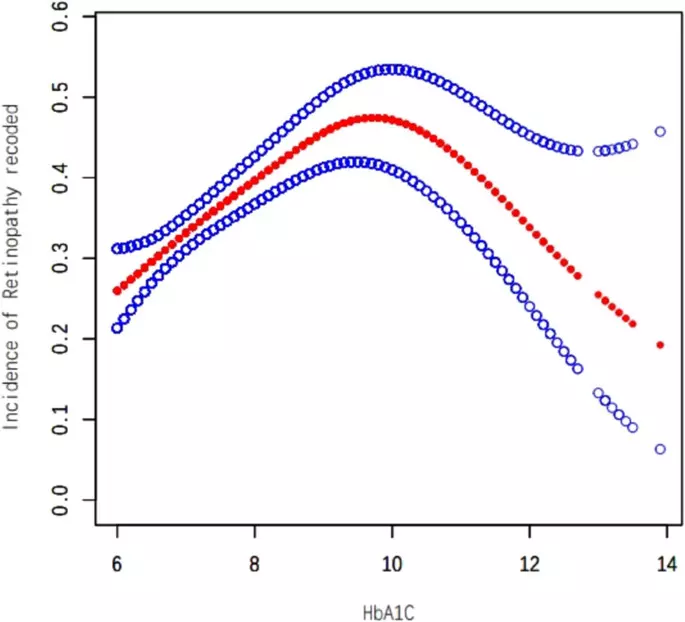HbA1C and Diabetic Retinopathy exhibit Inverted U-Shaped Relationship, reveals research

A recent cross-sectional study published in BMC Ophthalmology has identified a significant inverted U-shaped relationship between glycated hemoglobin (HbA1c) levels and the risk of diabetic retinopathy (DR) in patients with type 2 diabetes mellitus (T2DM). The study analyzed data from 2,001 T2DM patients in southern Taiwan and found that the risk of DR peaks at an HbA1c level of 9.4%, after which it declines with further increases in HbA1c levels. (BioMed Central)
This nonlinear association suggests that while moderate elevations in HbA1c are associated with increased DR risk, extremely high HbA1c levels may not correspond to a proportional increase in risk. The authors hypothesize that this pattern may be due to factors such as metabolic memory, where prolonged hyperglycemia leads to irreversible microvascular damage, and the plateauing effects of chronic oxidative stress and inflammation at very high HbA1c levels.(BioMed Central)
The study’s findings have important implications for clinical practice and public health policy. Regular screening and early intervention for diabetic patients, particularly those with HbA1c levels approaching 9.4%, are crucial for preventing the progression of DR. Healthcare providers are encouraged to monitor HbA1c levels closely and consider personalized management strategies to mitigate the risk of DR across diverse populations.(BioMed Central)
Reference:
Ling, J., Xie, Z., Chen, X., et al. (2025). Inverted U-shaped relationship between HbA1c and diabetic retinopathy in diabetic patients: a cross-sectional study. BMC Ophthalmology, 25, Article 289. https://doi.org/10.1186/s12886-025-04079-8
Keywords: HbA1c, diabetic retinopathy, type 2 diabetes mellitus, nonlinear association, metabolic memory, microvascular damage, oxidative stress, inflammation, public health policy.
